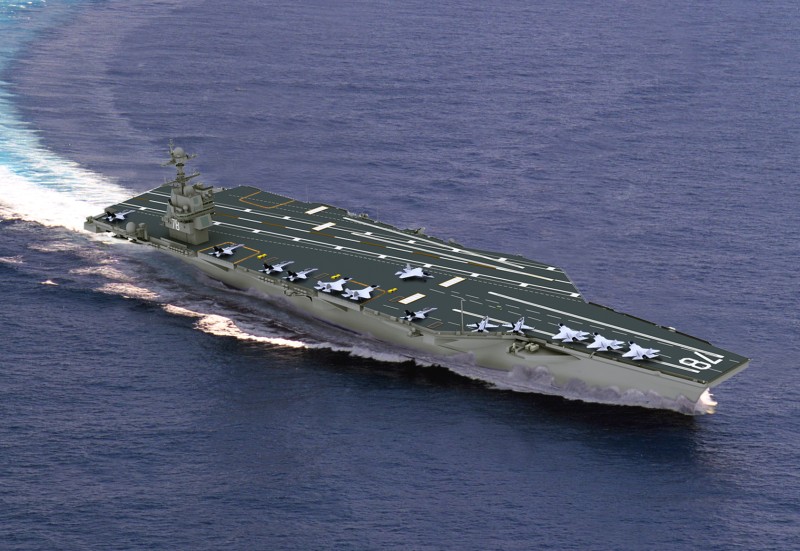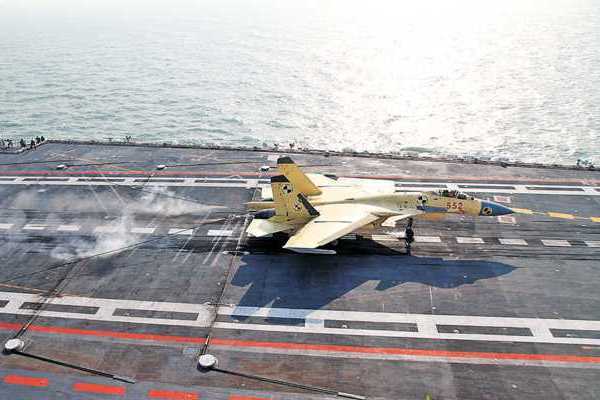By Rear Adm. Tom Moore, Program Executive Officer, Aircraft Carriers
This year has been an exciting and rewarding year for aircraft carriers.
In December 2012, we said good-bye to probably our most legendary aircraft carrier and held a formal inactivation ceremony for USS Enterprise (CVN 65). She is now at Huntington Ingalls-Newport News to begin the final inactivation steps before we tow her to Puget Sound where we will complete the inactivation.
While we are sad to say good-bye to for USS Enterprise (CVN 65), her name will continue; the secretary of the Navy announced the third ship of the new Ford class, CVN 80, will be named Enterprise. We also are nearing completion of the mid-life refueling complex overhaul of USS Theodore Roosevelt (CVN 71) and expect to return her to the fleet for another 23 years in August. We commenced the refueling complex overhaul of USS Abraham Lincoln (CVN 72) in March.
Our biggest event this year will be the introduction to the Navy and the Nation of our newest aircraft carrier, Gerald R. Ford (CVN 78), with the christening and launch of on Nov. 9, 2013. This will mark the beginning of a new class of aircraft carriers that will be in service for the next 94 years. With exception of the hull, virtually everything has been redesigned to make the Ford class more capable and more powerful than in the Nimitz class. This new class of carrier will build on the legendary performance of the Nimitz class carriers and will provide 25 percent more combat capability, increased service life margins throughout the ship to handle the aircraft and weapon systems of the future including unmanned aircraft and futuristic directed energy weapons, as well as driving down the total ownership cost of the ship by $4 billion over its 50 year service.
If you drive by Huntington Ingalls-Newport News today, you will see the ship being built in drydock number 12. The ship’s structure is 100 percent complete. We are finishing up underwater shafting work and painting the hull in preparation of the ship’s launch.
The first thing you’ll notice is that the ship’s island is smaller and moved farther aft than on the Nimitz class and that there are no rotating antennas on atop the island. This is because CVN 78 will be the first ship to get the new dual-band radar that operates with phased array radars similar to AEGIS.
The smaller island and its location farther aft also provides for more flight deck space that combined with new weapons elevators and a NASCAR pit stop refueling concept will allow us to rearm and refuel aircraft faster to turn them around for the next mission. The net result is a 25 percent increase in sortie generation rate as compared to a Nimitz class carrier.
We’ve also revolutionized the launching of aircraft with the electromagnetic aircraft launching system.
You’ve probably experienced the technology yourself if you’ve ridden a roller coaster lately. EMALS and advanced arresting gear expand the launch and recovery envelope of the traditional steam catapults and arresting wires.
This allows pilots to launch and land with heavier aircraft, enabling the launch of lighter unmanned aircraft in the future. A secondary benefit of the electromagnetic aircraft launching system and advanced arresting gear is the ability to apply launch and recovery forces more evenly, producing less stress on the airframe and potentially saving on aircraft maintenance.
These are just a couple of the new technologies on CVN 78 that will lead the Navy and naval aviation with a true leap forward over the next century. CVN 78 construction is about 63 percent complete. We expect to commission the ship in the second quarter of 2016. At the same time that we are getting ready to christen CVN 78, we have begun advance construction on the John F. Kennedy (CVN 79). We are working directly with the shipyard to incorporate the lessons learned from the construction of CVN 78 along with new game changing build strategies that will significantly reduce the cost of CVN 79 and future ships of the class. I look forward to continuing the conversation about CVN 78 and the Ford class in the coming months.











